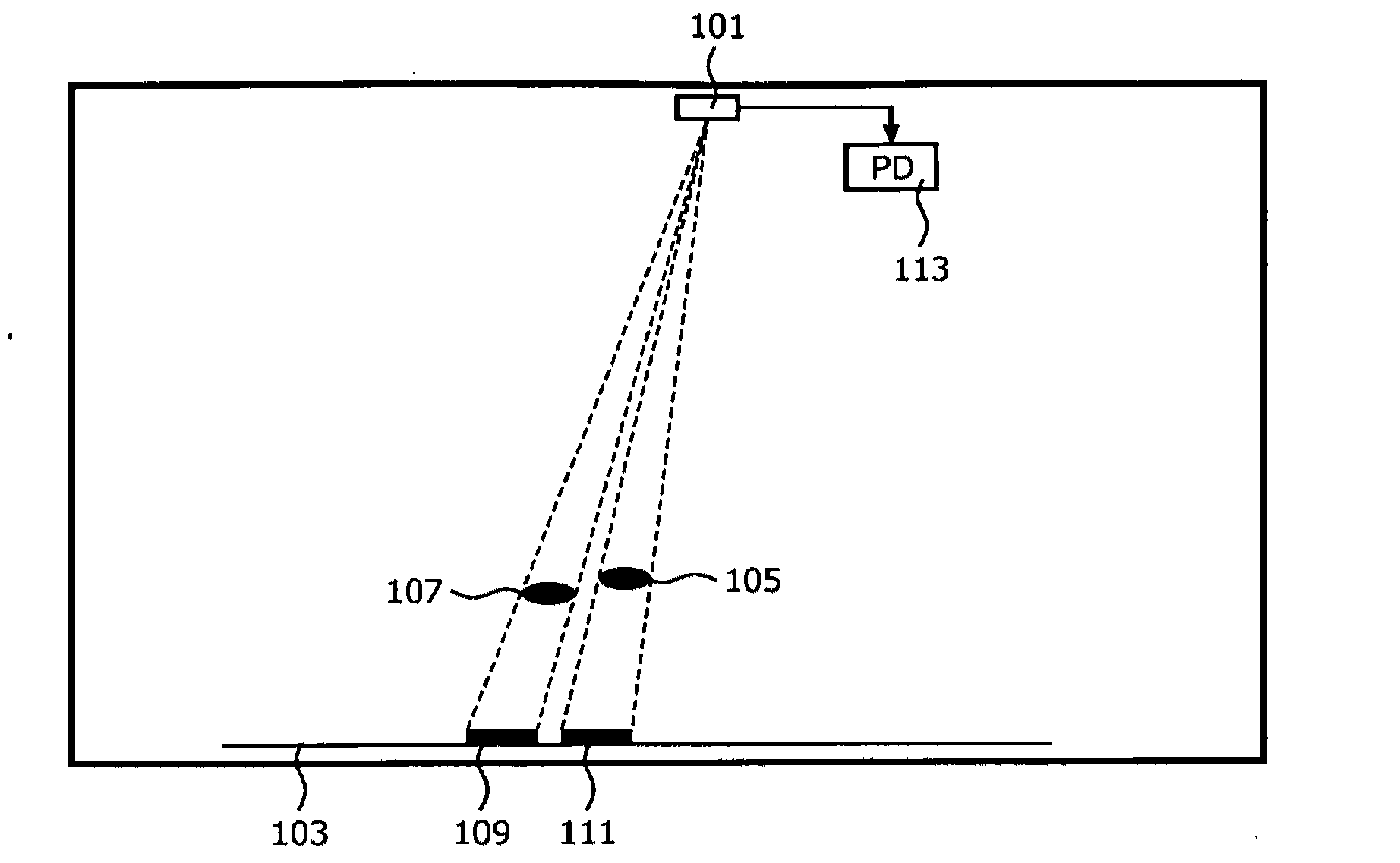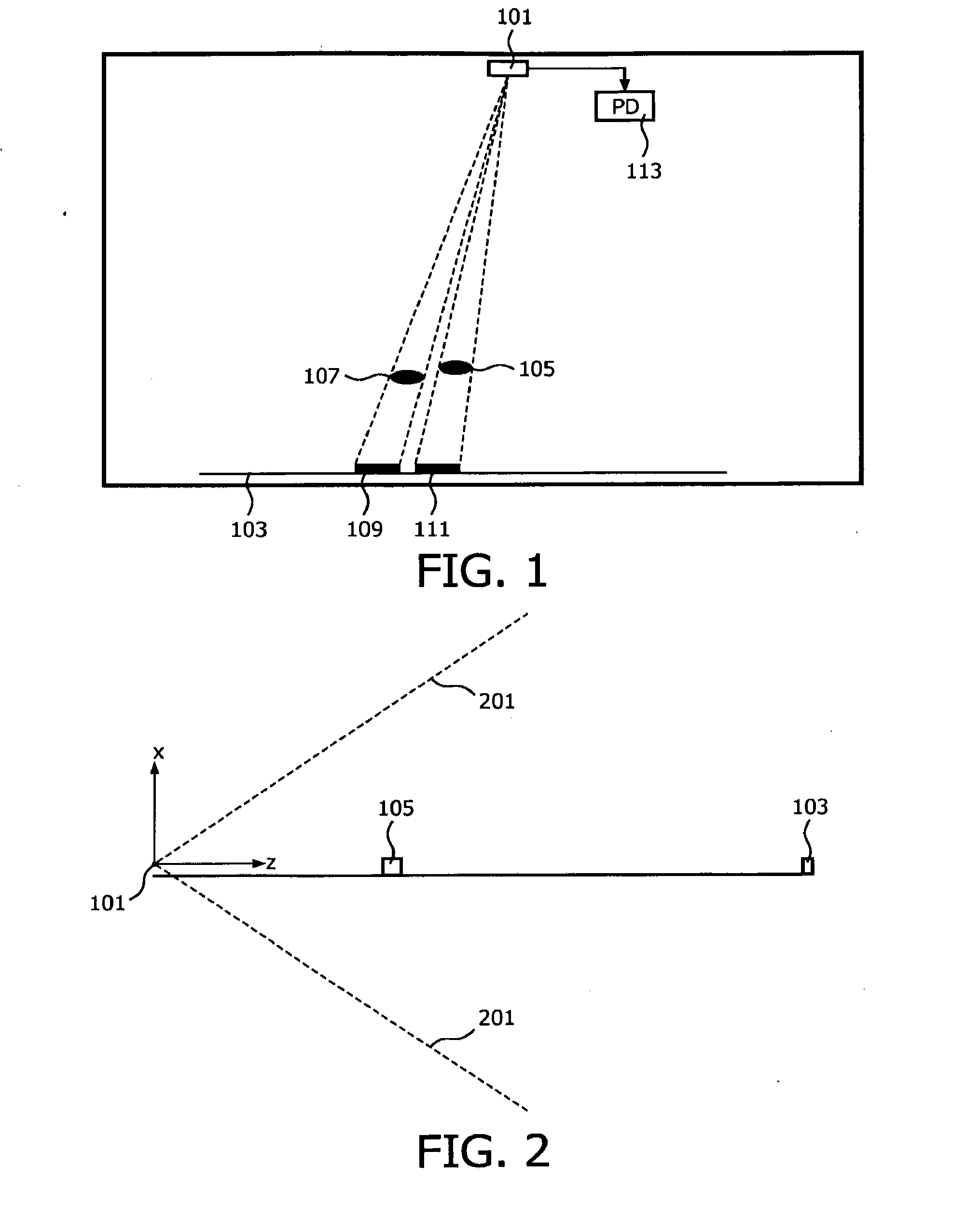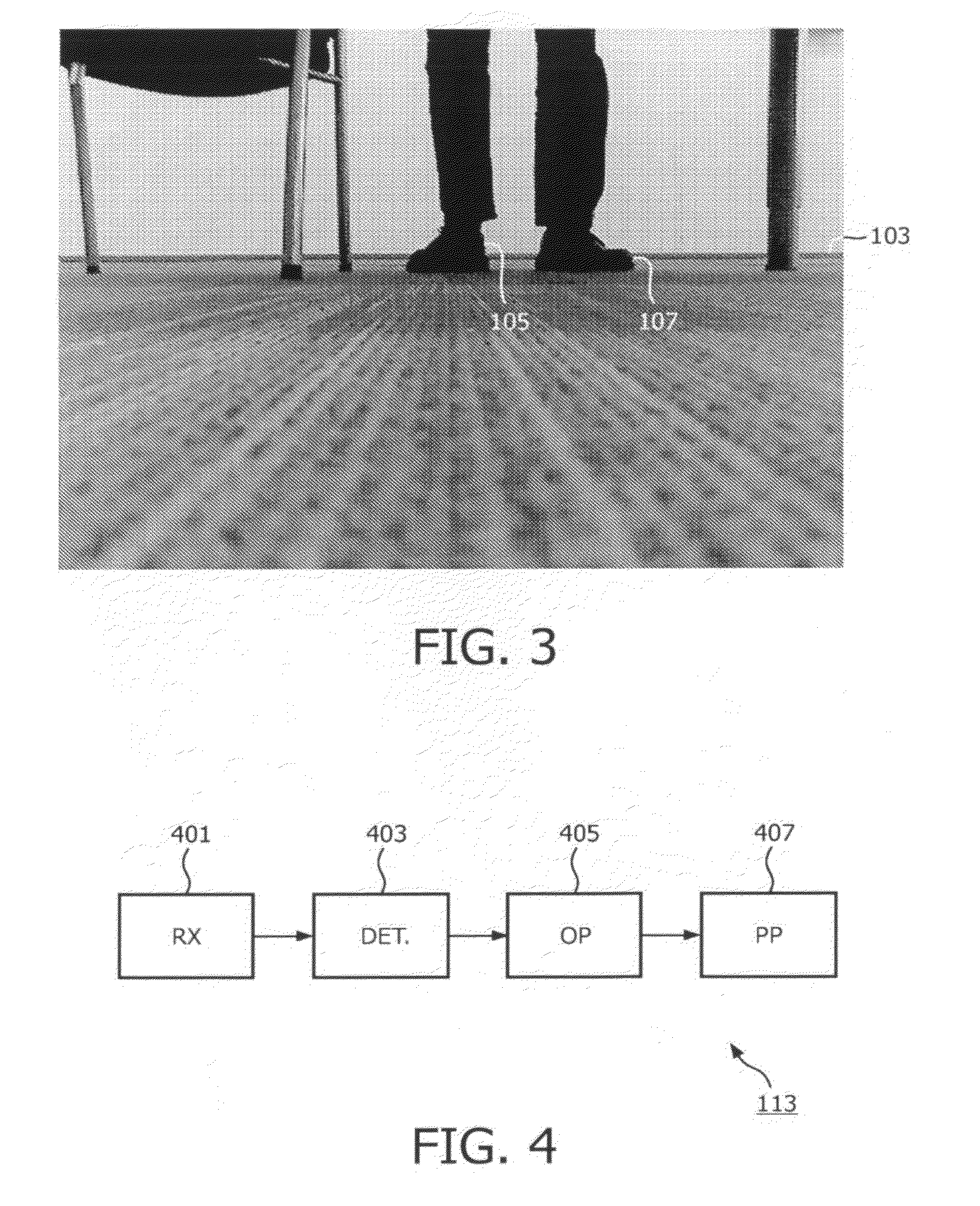Determination of a position characteristic for an object
- Summary
- Abstract
- Description
- Claims
- Application Information
AI Technical Summary
Benefits of technology
Problems solved by technology
Method used
Image
Examples
Embodiment Construction
[0074]The following description focuses on embodiments of the invention applicable to a system for detection of the presence of people in a room. However, it will be appreciated that the invention is not limited to this application but may be applied to many other applications and objects.
[0075]In the following, a system will be described which is arranged to determine characteristics of an object which may be placed in a room based on images captured by one or more video cameras. Specifically, a depth position may be determined which comprises an estimate of the position of a potential object in the room in a direction which is perpendicular to the image plane of the camera. Thus, the system may allow a determination of a position estimate for a position component along the optical axis of the camera. The system may in addition determine one or more position estimates for the object in a direction that is parallel to the image plane and may specifically determine a three dimensiona...
PUM
 Login to View More
Login to View More Abstract
Description
Claims
Application Information
 Login to View More
Login to View More - R&D
- Intellectual Property
- Life Sciences
- Materials
- Tech Scout
- Unparalleled Data Quality
- Higher Quality Content
- 60% Fewer Hallucinations
Browse by: Latest US Patents, China's latest patents, Technical Efficacy Thesaurus, Application Domain, Technology Topic, Popular Technical Reports.
© 2025 PatSnap. All rights reserved.Legal|Privacy policy|Modern Slavery Act Transparency Statement|Sitemap|About US| Contact US: help@patsnap.com



